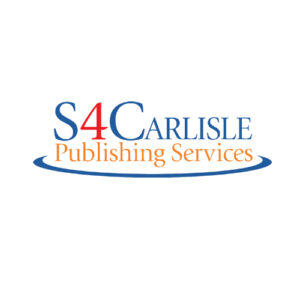Using Generative AI For eLearning Design
If there’s one company that has made tremendous progress in the last two years and created a huge wave of excitement across different industries, it is OpenAI. Originally starting as a research laboratory, it comprises the non-profit OpenAI Incorporated and the for-profit subsidiary OpenAI Limited Partnership. When the first version of ChatGPT was launched there was a fair bit of curiosity among the general public and a lot of teachers said that this is an easy way for students to complete their assignments.
With each iteration of the tool becoming better and more powerful, today ChatGPT is around everywhere. Creative copywriters are looking for advertising copy, harried managers are using it to compile reports, students are using it to finish assignments, fitness addicts are using it to design workout plans, programmers are using it to generate and refine code, and the list seems pretty long. In this article, we will look at how generative AI tools can bring about a radical change in eLearning design.
Generative AI: A Quick History
Generative AI can trace its roots to Machine Learning and predictive statistical tools that sifted through data to predict future trends. From mid-2010 onwards, companies and research labs worked on different models, but it was in 2018 when the biggest breakthrough was achieved with OpenAI launching the first GPT as a Large Language Model or LLM. A GPT model is an artificial neural network, pre-trained on large volumes of data, and designed to offer answers based on prompts/questions.
Microsoft and Google have both come up with their own AI-powered tools—Bing AI and Bard, respectively. Anthropic, a company backed by Google has also launched an AI assistant named Claude. The next few years are going to be even more exciting and different companies come up with their own generative AI-powered tools that will support different industries.
Generative AI And eLearning Design
eLearning design, the writing part, and the creative design part are subjective. If you give the same topic to two different organizations and ask them to come up with an eLearning course on the topic, you are likely to see two completely different finished products. The challenges in creating engaging eLearning design remain the same despite the technological progress of the last two decades. Learners need content that is crisp and direct and helps them achieve their academic or professional goals. Quite often in the trap of providing more information or creating a better User Experience, the main purpose of the eLearning program is forgotten and the learners are given a sub-standard product that benefits no one. In the section below, we will list some AI-powered design tools that can benefit creative designers across industries.
On Generative AI Tools For Instructional Design
- VisualEyes is an AI-powered design feedback tool that provides real-time feedback on designs.
- Khroma is an AI-powered color palette generator that helps users find the best colors for their designs.
- Scribble Diffusion is an AI-powered illustration tool that can turn basic sketches into highly detailed images.
AI-powered writing tools have been around for some time. Jasper AI, Copy AI, and Writesonic have been some popular writing tools. Grammarly has quickly captured the market as a tool to assist people who wish to write error-free English and the free version of the product itself is quite useful. A paid version removes restrictions on usage and offers a comprehensive grammar check of writing submitted to the tool.
ChatGPT, Bard, and Bing AI are all effective to generate scripts, writing copy for a specific need, or designing the draft of a larger essay. The effectiveness of the content produced through these tools is dependent on the prompts being fed into them. Prompt engineering will evolve into a core subject area of its own as more AI content tools and chatbots come up. A point that Instructional Designers should remember is that ChatGPT or similar tools are to be used as friends who can suggest ideas. At the end of the day, it is the choice of the individual, the writer, on what to use, what not to use, and how to refine the content that these tools provide.
Scope Of Usage
Other than the apparent use of AI tools to generate images or paraphrase content, Instructional Designers can use ChatGPT to define the outline of a learning module, frame objectives, and design relevant questions based on the target audience. These are some areas of interest that can be examined by Instructional Designers and the content that is generated by these tools should be validated properly before being used in the actual eLearning program.
What eLearning Designers Really Need From AI
How easy it would be to feed a learning requirement into the prompt and get a detailed eLearning course storyboard as an output that can then be passed onto the graphic design team for development! If we end up reaching such a level of sophistication, people will end up losing jobs en masse, and everyone with access to ChatGPT can claim to be a writer and come up with content. As AI-powered writing tools mushroom, there will be similar AI-powered tools to capture plagiarism and distinguish between human-written and machine-generated content, and this will become another important business case for tech companies to address.
What eLearning designers would appreciate is the presence of some kind of alpha/beta testing tool that examines course outlines or storyboards and gives feedback in terms of which storyboard, when converted to a course, will offer higher learner engagement and better retention of learning. This coupled with data derived from past courses will enable designers to refine existing courses and come up with better eLearning content.
Conclusion
A few years ago, blockchain was the buzzword in technology. Now everyone is on the ChatGPT and generative AI bandwagon. Every few years there is some technology or other that keeps getting primetime attention and is touted to be the next game-changer. In the case of ChatGPT, the interest has been sustained for a longer period. It will be interesting to see which company launches the first AI-powered all-inclusive eLearning course-authoring tool. The ethical aspects of using such tools still remain unaddressed and we will get to see new roles in tech companies that will focus on compliance and validate if something is created by AI or humans. The next few years will be significant and all vendors in the digital learning space will be hungry to capture a share of the AI-powered learning market.










